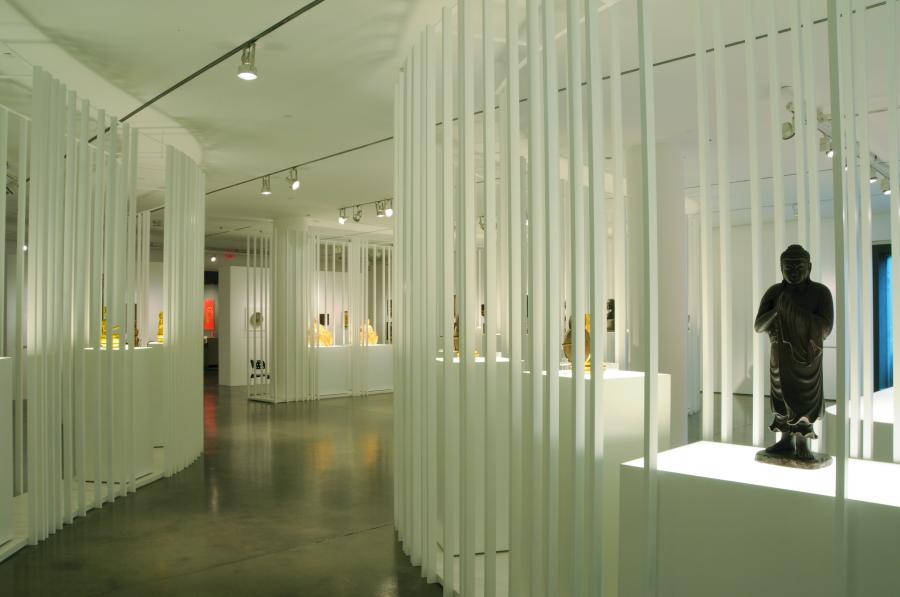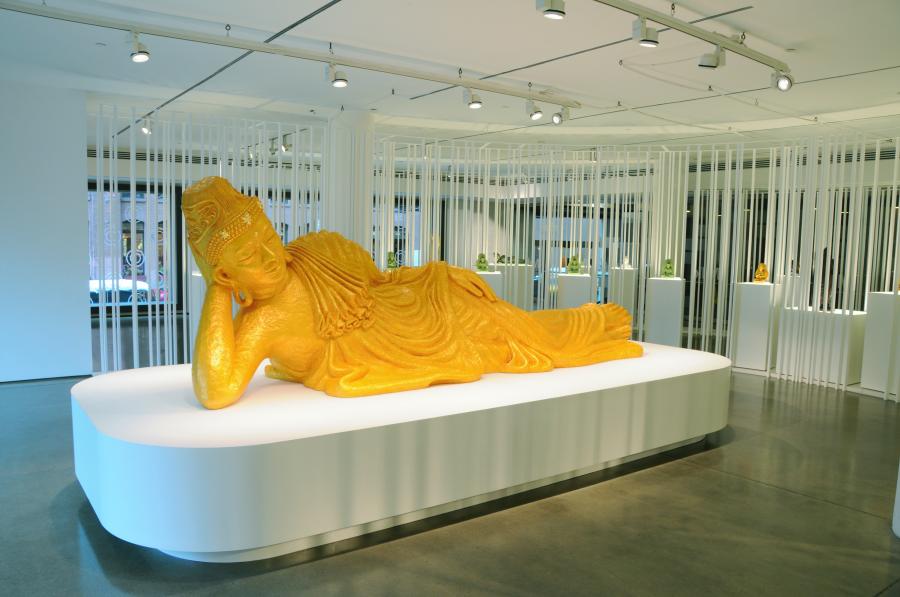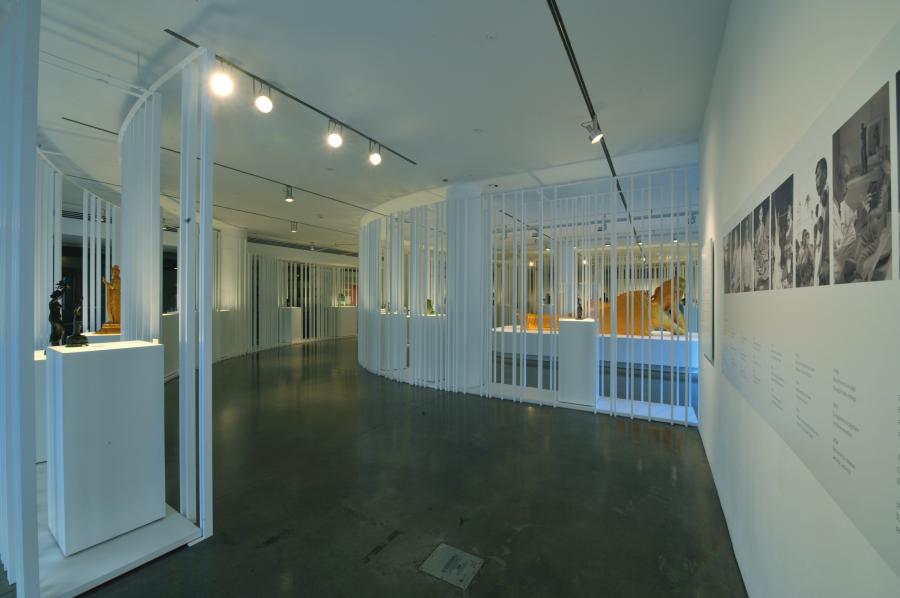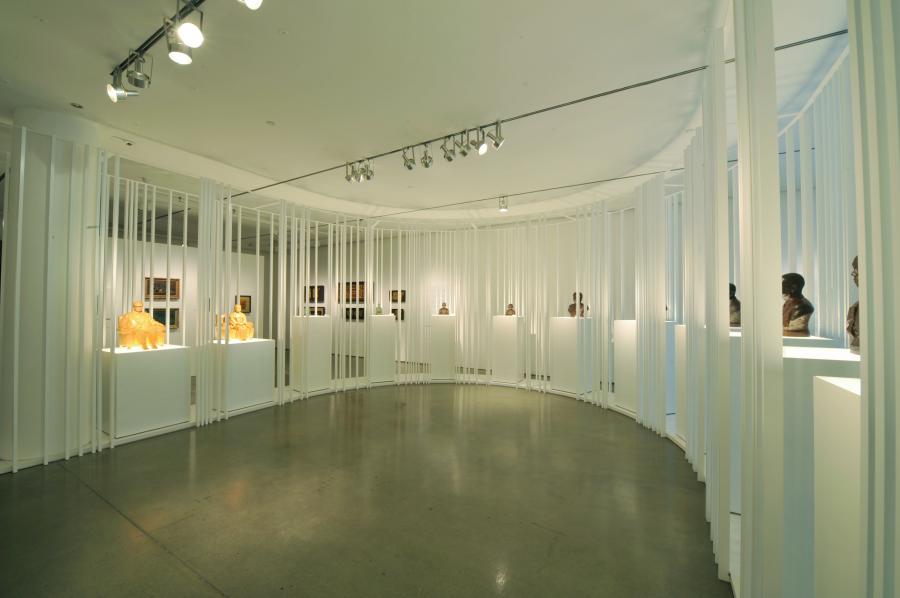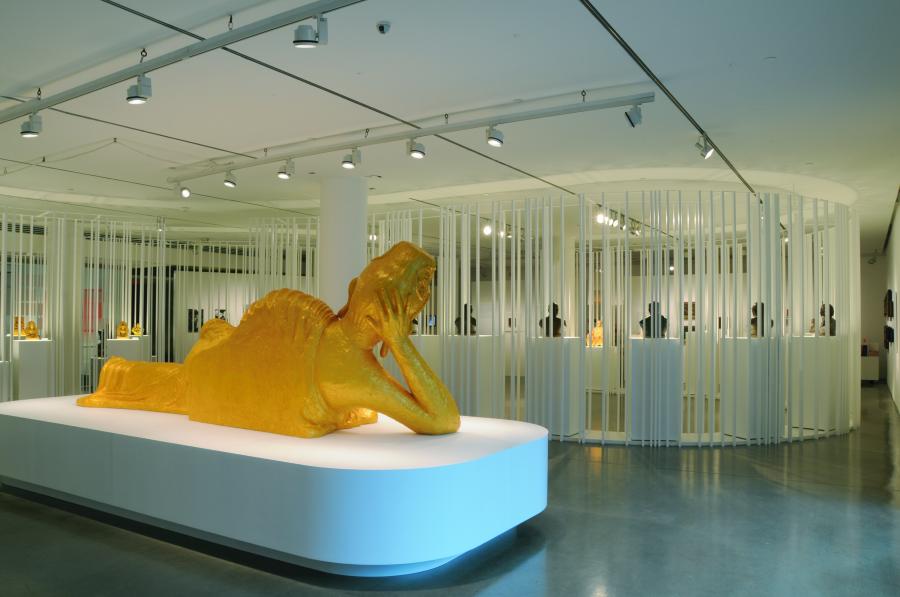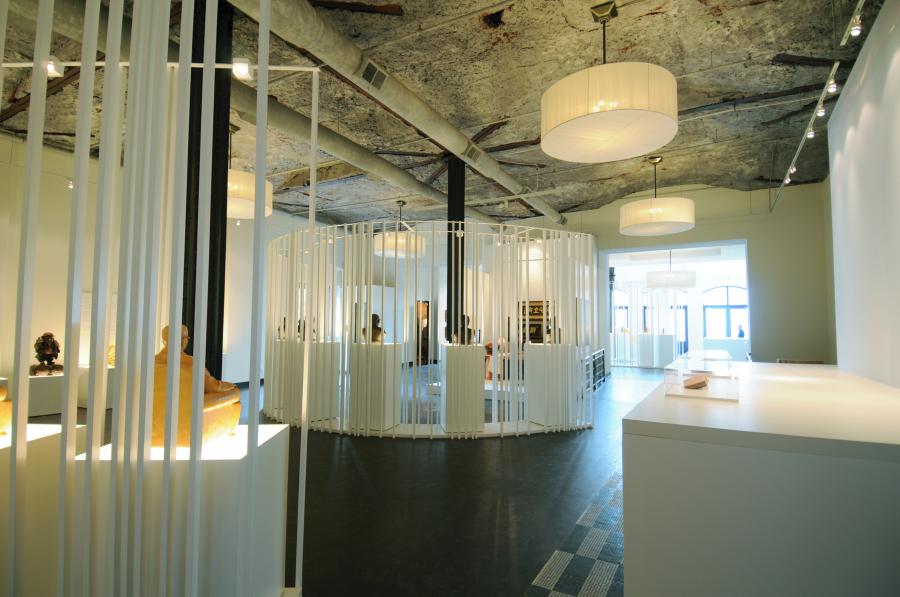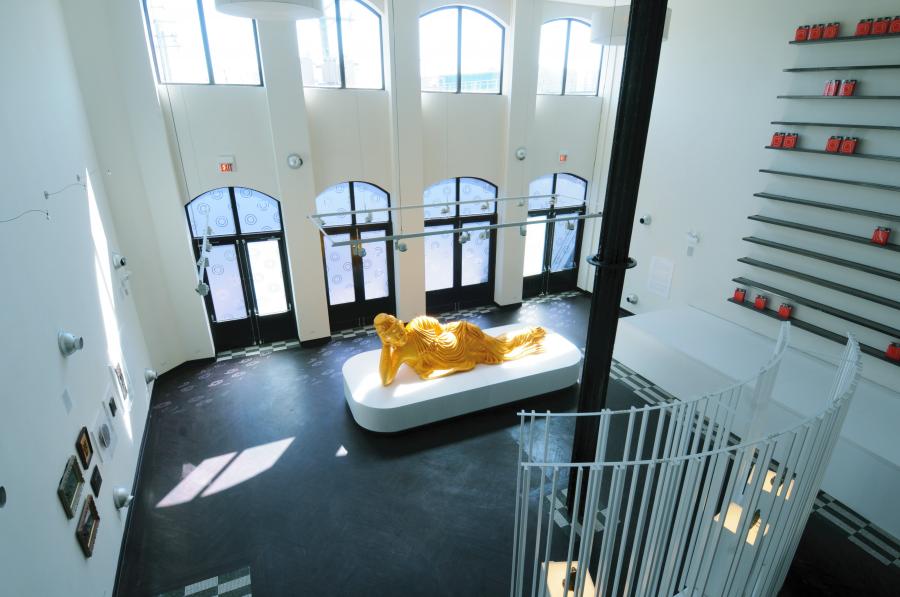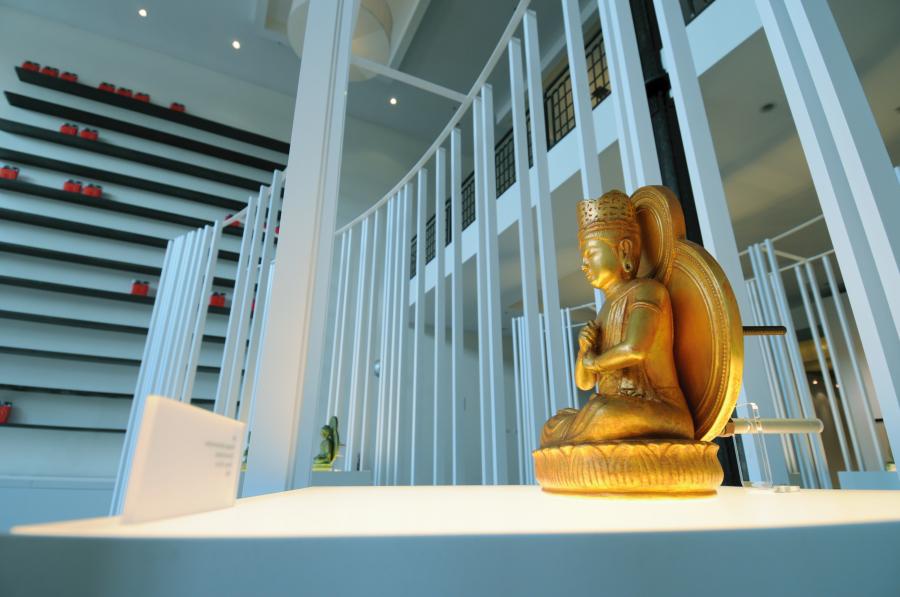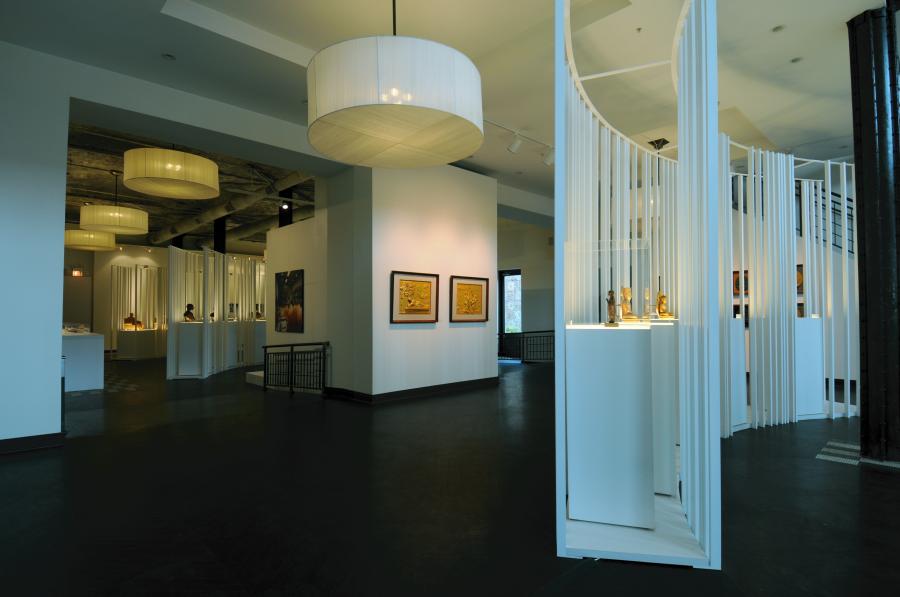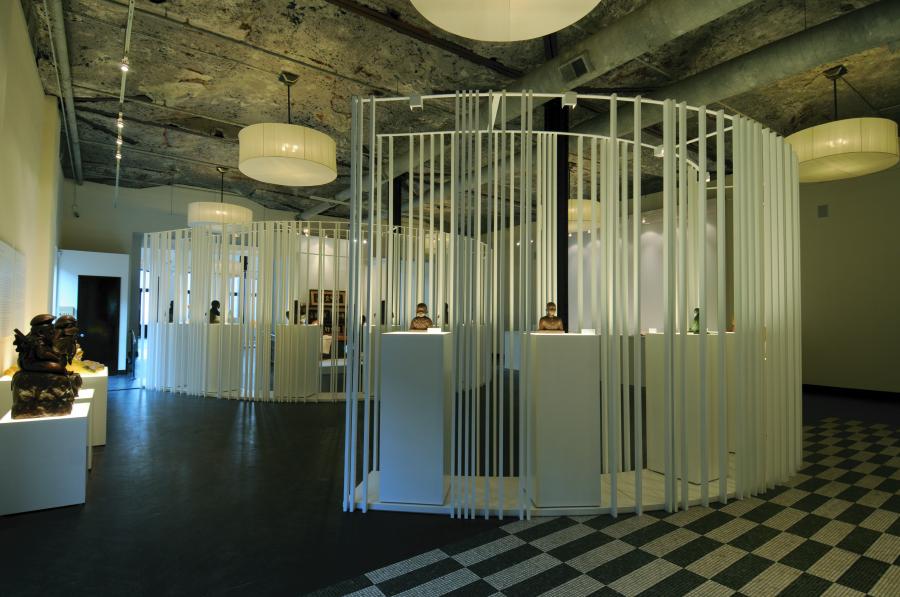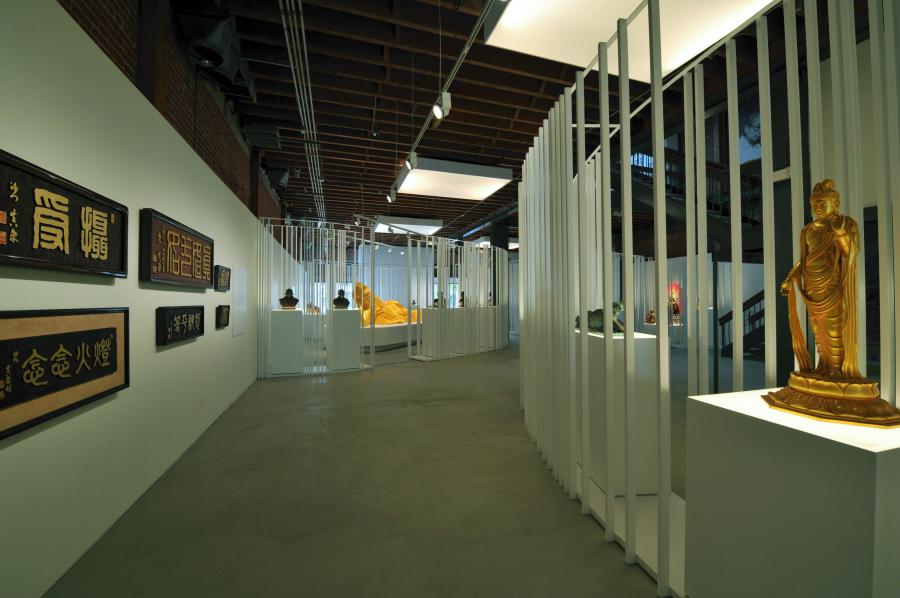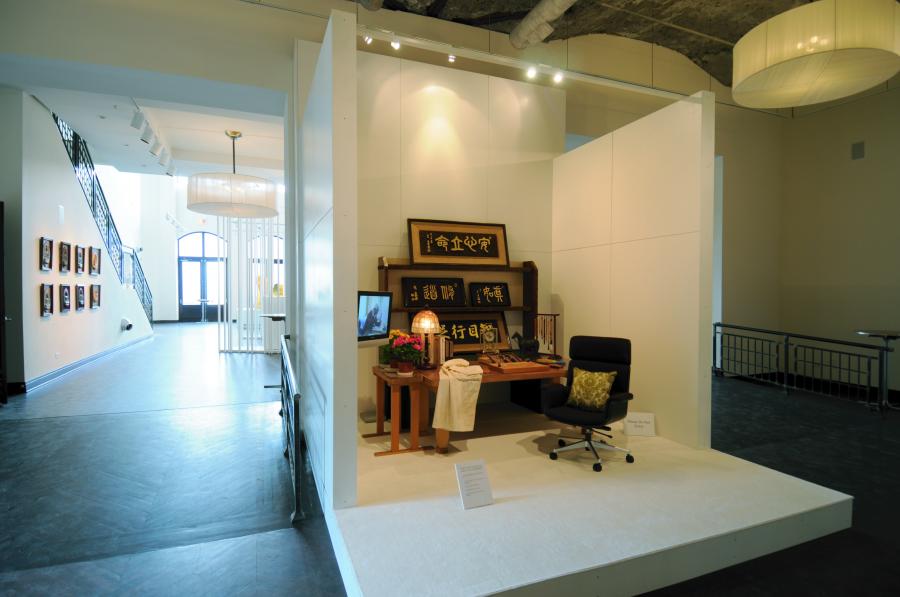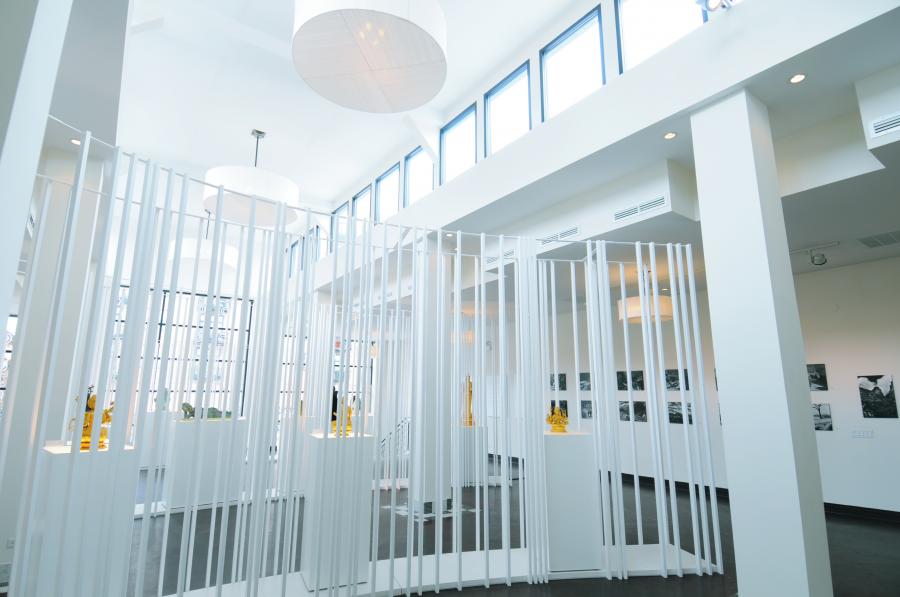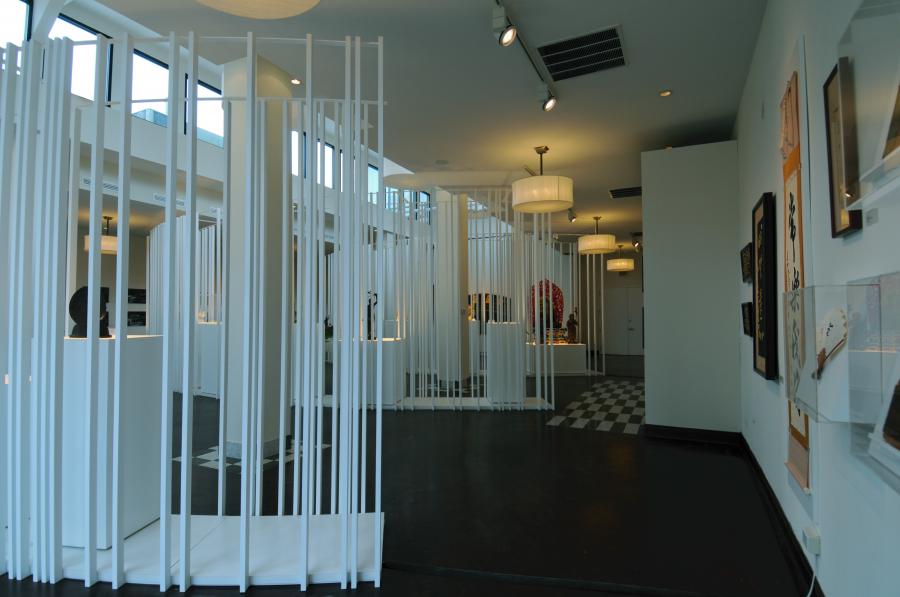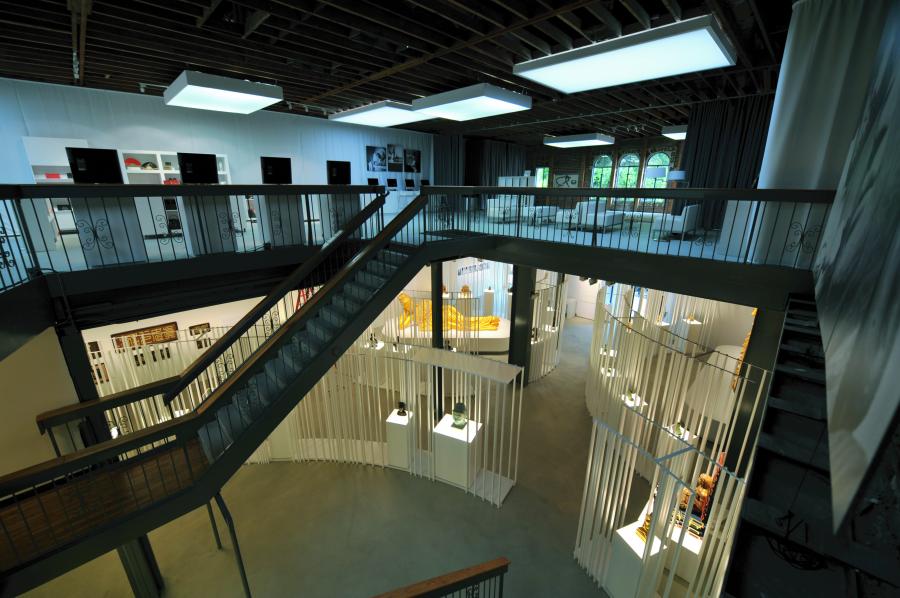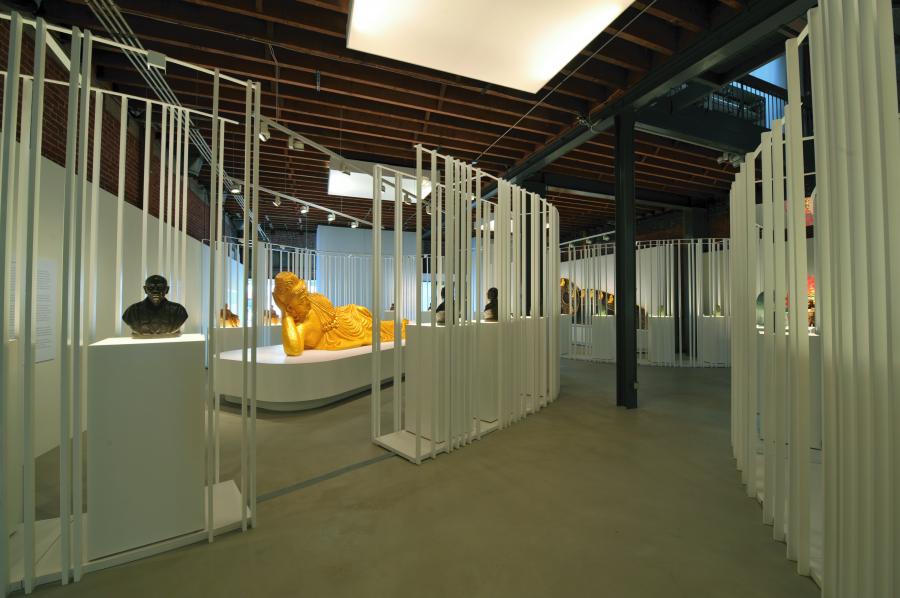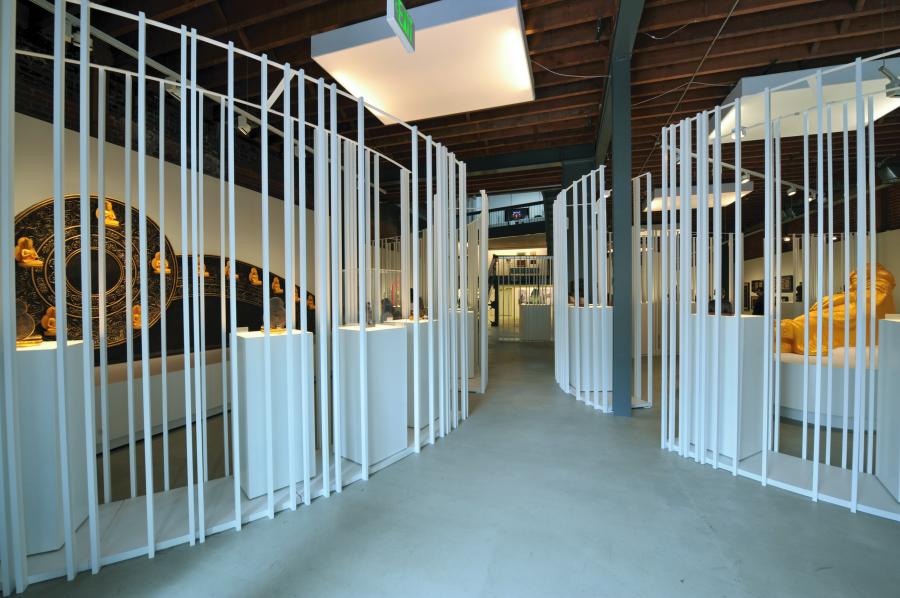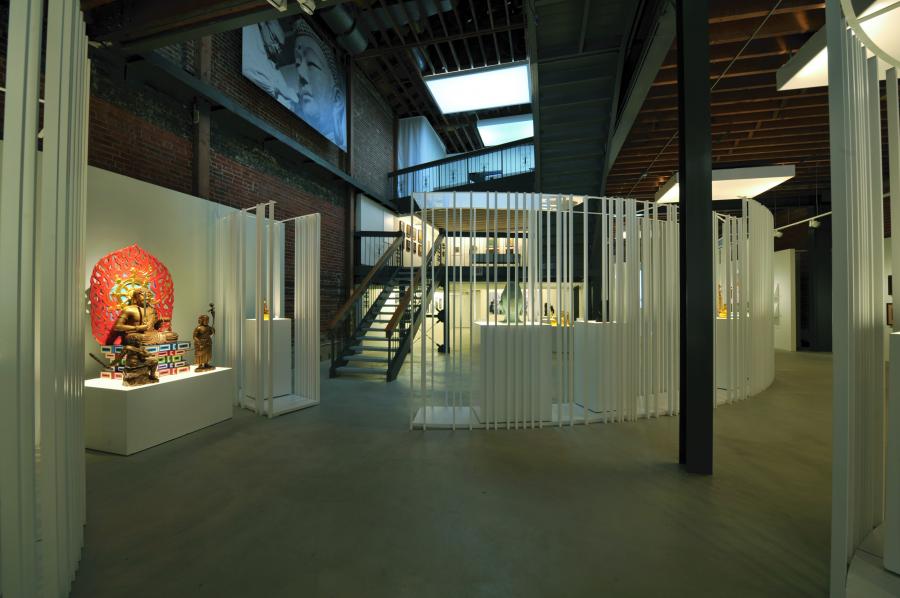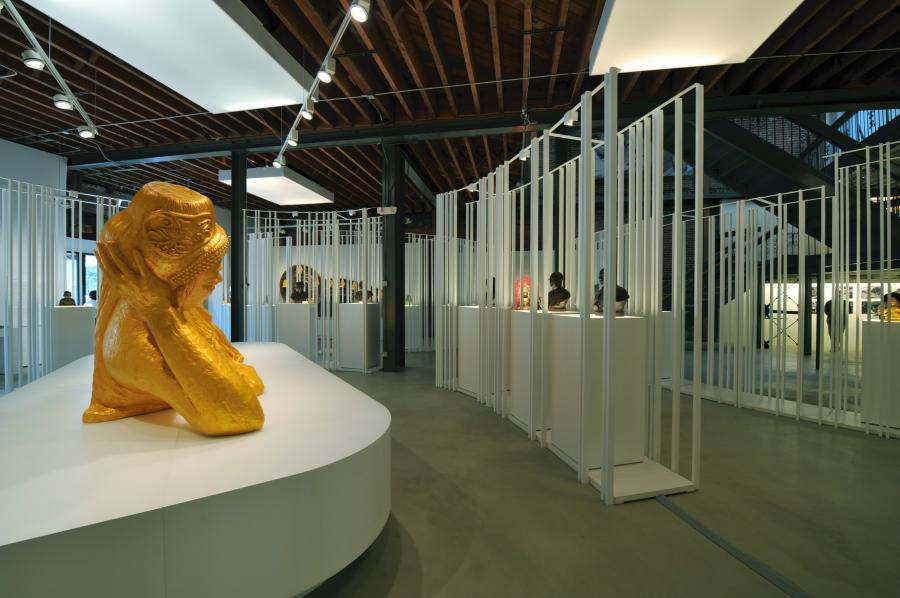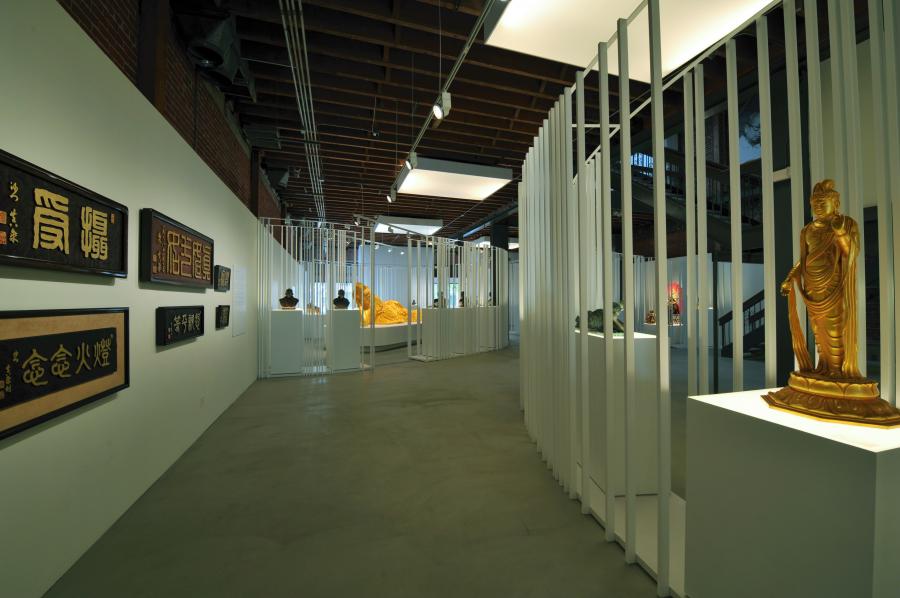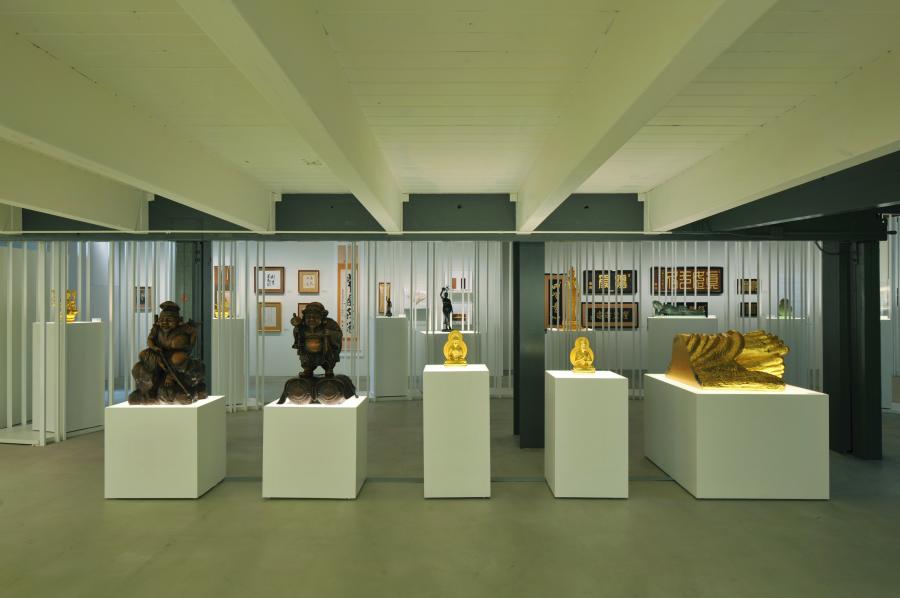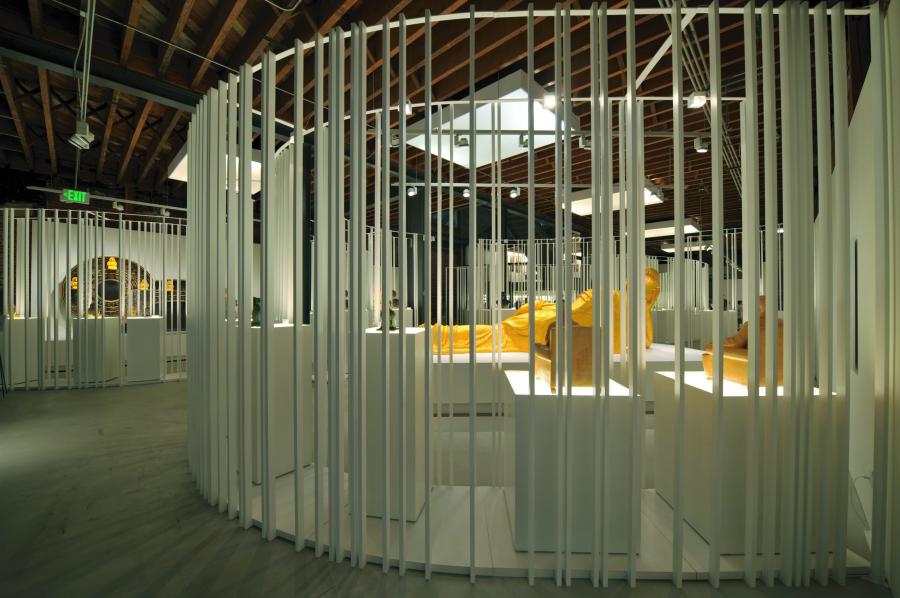伊藤真乗の目と手展 アメリカ3都市(ニューヨーク、シカゴ、ロス・アンジェルス)巡回展の会場構成作品
総合プロデュース:Hiroko Sakomura 迫村裕子/S2
会場構成:Shoji Oshio 押尾章治/UA+Armen Gharabegian/ETHOS DESIGN
照明デザイン:Shozo Toyohisa 豊久将三/KILTPLAN
グラフィックデザイン:Alexander Gelman/GelmanStudios
Title 名称: The Vision And Art of Shinjo Ito → NewYorkTimes
Term 会期: New York 2/21 – 3/30, Reception 2/20,6pm- Chicago 4/ 8 – 5/ 1, Reception 4/7,7pm- Los Angeles 5/ 8 – 6/29, Reception 5/7,7pm-
Venue 会場: MILK Gallery 450West 15th Street New York, NY 10011 Chicago illuminating Company 19East 21st Street Chicago, IL Westwood Art Forum 1028 Westwood Boulevard Los Angeles, CA 90024
Organizing Committee 実行委員:
Donald Keene, Professor Emeritus, Columbia University;コロンビア大学名誉教授
Robert Thurman, Founder, Tibet House チベットハウス創設者
Margaret R. Miles, Emeritus Professor of Berkeley, California
カリフォルニア州立大学バークリー校名誉教授
Yasuaki Nara, Emeritus Professor if Komazawa University 駒沢大学名誉教授
Masahiro Shimoda, Professor of Buddhism, Tokyo University 東京大学名誉教授
Hiroko Sakomura, Producer 総合プロデューサー
本展覧会は、昭和の仏師と呼ばれた伊藤真乗の作品展である。生誕100年を記念し、真乗が残した仏像を中心にレリーフ・書など約100点の作品と、アトリエの再現や映像資料の展示も予定される。一昨年から巡回していた日本国内での展示に続き、本NY展を皮切りに、シカゴ、LA、フィレンツェ、ミラノなどで今後の開催が予定されている。
(展示における空間コンセプト)
この展覧会は、仏師であり宗教家でもあった真乗の作品世界を紹介する、昭和以降の仏像展としては初の大規模な海外展である。そして、真乗の作品世界を余すことなく伝えると同時に、広く仏教全体がもつ世界観を空間として表現している。
仏像は、礼拝対象物として作られる。当然のことながら、観賞用の仏像というのはない。本来的には、それらが安置されるお堂や伽藍と一体不可分として扱われるものである。寺院を訪れる礼拝者は、石畳や境内地、付近の木立や山並みなど、周辺環境を享受した先の目的として仏像と対面し、祈りとして自らの精神世界を押し広げるのである。仏像の展覧会とは、そのような本来的なコンテクストから切り離した上に成り立っている。
しかし今回は、一度は引き離された、寺院やその周辺環境がもつ多様な空間性を、ギャラリースペースの中に現代的につくりなおすことで、より深く作品性が引き出せると考えた。
NYの展示スペースは、細いルーバーのスクリーンで構成される。展示経路は大きくうねらせた2枚のルーバーによってやわらかく仕切られ、仏像はその合間に配置されている。ルーバーのピッチはランダムにした。こうすることで、全体にボヤっとした、ルーバーでできた霧が立ち込めるような空間の中で、鑑賞者の移動に応じて様々に仏像が立ち現れる空間ができている。
場所に応じて局所的な一対一関係で仏像に出会いながらも、常に全体にある他の仏の存在も意識させる構成自体が、周辺環境を孕みながらも佇む、きわめて仏教的な空間概念を表していると考えたのである。本来的に仏像が持っていた多様な周辺環境との補完関係を抽象化・再構成し、ルーバーという材料を使って表現してみた。
押尾章治
(The Concept of the Exhibition Space)
This is the first time for me to have an exhibition abroad, and my focus to this exhibition is a little bit different from the ones in Japan.
Through this exhibition, I would like to show not only the whole world of Shinjo as a religionist and a Buddhist sculptor, clearly, but also the Buddhism world itself as the expression of space.
Because Buddhist image is originally for prayers, it is supposed to be in a space of temple. Meeting with a Buddhist image for a prayer is a part of his/her sequential experience in a temple, such as looking over the skyline of mountains around, walking through the approach steps, crossing over the threshold to the Buddhist hall, and so on.
In a sense, displaying a Buddhist image in a gallery means the replacement of its purpose, from worship to appreciation. Then the appreciation is the separation from its original context, space of temple and its landscape, and the loss of its original meaning as an object for prayers.
My challenge for this exhibition is to represent the essence of the Buddhist world in the space of modern gallery. I believe that it is also the better way to realize Shinjo’s world more clearly without any space of temple.
The space of this exhibition consists of several screens with vertical thin lines, called louvers. Buddhist images are displayed in between the louver screens, and by this screens, each corner of the gallery space is softly separated from others. As the louver screen is not a complete interruption, the view goes through the screens.
This character of louver makes you possible to overview the whole space from any route of display, so that you can encounter each Buddhist image on the route in the situation of always awareness of other Buddhist images as a whole.
The condition of space with the louver screens mentioned above enables to express the very Buddhism world. You are not only in a simple relationship with each Buddhist image, there, but also involved in a kind of whole environment. Along with the viewer’s movement, Buddhist images are hidden and revealed from the louvers, and this experience could make the place as the place for a sort of unexpected encounter.
In an ambiguous space as a whole, like in a mist of louvers, the space for various encounter and discovery appears both in partial and total.
Also, such an approach to create a space reminds me the Modernist process of abstraction and representation.
OSHIO,Shoji
[NEW YORK] Milk Gallery, Chelsea, NY 2/21 – 3/30
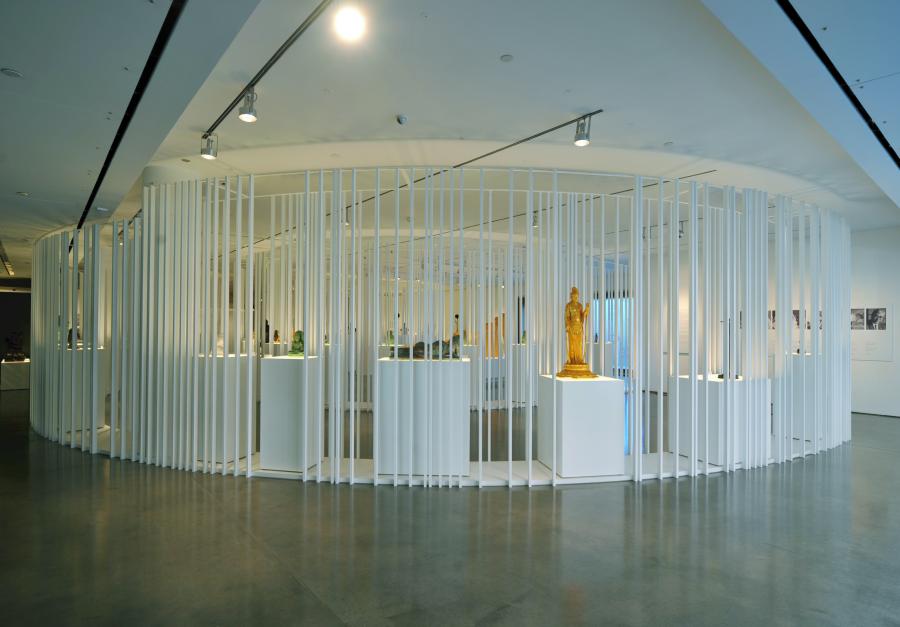
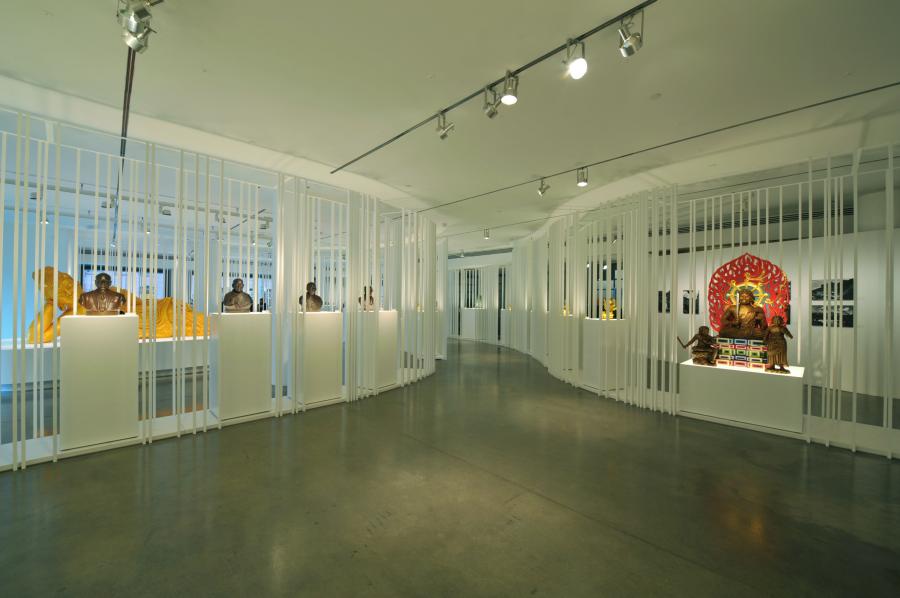
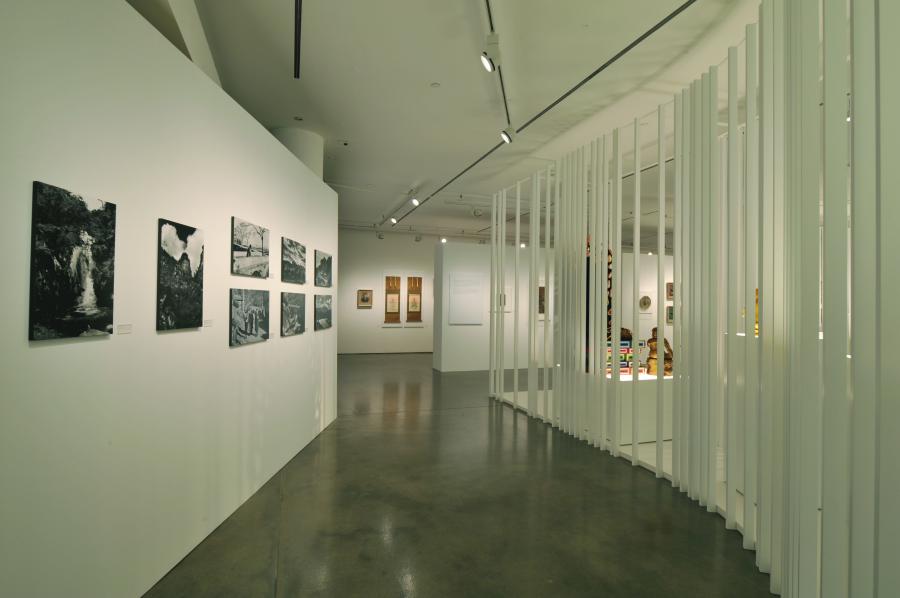 [CHICAGO] Chicago illuminating Company 4/8 – 5/1
[CHICAGO] Chicago illuminating Company 4/8 – 5/1
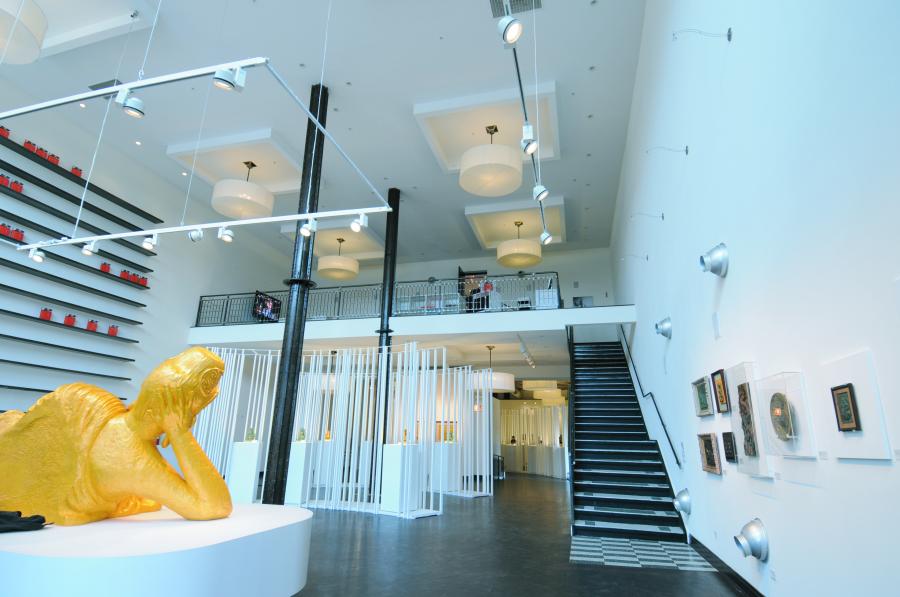
[LOS ANGELS] Westwood Art Forum 5/8 – 6/29
